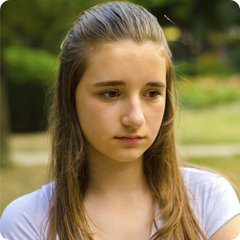 by Sara Jackson, CSW
by Sara Jackson, CSW
Center for Safe & Healthy Families
The National Institute of Mental Health estimates that 20 percent (or 1 in 5) children have a mental illness. That means that nearly 5 million children in the United States have some type of mental disorder that significantly interferes with their daily living.
In fact, earlier this month President Obama declared May the National Mental Health Awareness Month in an effort to raise awareness of and to continue helping those with mental illnesses. The presidential proclamation states, “My Administration is also investing in programs that promote mental health among young people. We secured new funding to train teachers to identify and respond to mental illness and to train thousands of additional mental health professionals to serve students.”
A study conducted by The Centers for Disease Control and Prevention demonstrated that approximately 13 percent of children (aged 8 to 15) had a diagnosable mental disorder within the previous year. The most common disorder among this group was attention-deficit/hyperactivity disorder (ADHD), which affected 8.5 percent of the population followed by mood disorders which affected 3.7 percent, and major depressive disorder at 2.7 percent.
Identifying mental disorders in children can be very difficult in that children naturally go through physical, mental and emotional changes as they develop. It can be difficult to determine what is considered “normal” given that children mature at their own pace. For these reasons, a diagnosis of a mental disorder must be made by a mental health professional who considers how the child functions at home, within the family, at school, with peers, as well as the child’s age and symptoms.
Some general symptoms of mental illness may include:
- Abuse of drugs/alcohol
- Inability to cope with frustration/problems
- Marked changes in sleeping/eating habits
- Excessive complaints of physical ailments
- Defying authority, skipping school, stealing or damaging property
- Frequent outbursts of anger
- Changes in school performance
- Loss of interest in friends and activities they usually enjoy
- Withdrawing more often
- Excessive worrying/anxiety
- Hyperactivity
- Persistent nightmares
- Significant increase in aggressive behaviors
- Frequent temper tantrums
- Hearing voices or seeing hallucinations
If you have noticed significant emotional or behavioral changes in your child or if your child has multiple symptoms listed above, you may consider seeking additional help. Primary Children’s Behavioral Health can help determine what type of treatment your child could benefit from. Your insurance company can also help you find an experienced provider in your network. If you decide to pursue mental health treatment for your child, it will generally begin with an assessment and or testing to determine your child’s needs. Therapy and medication are sometimes utilized in conjunction with one another to treat mental health illnesses.
The good news is that, “when treated appropriately and early, many children can fully recover from their mental disorder or successfully control their symptoms …many people who experience a mental illness are able to live full and productive lives” (Mental Illness in Children).
